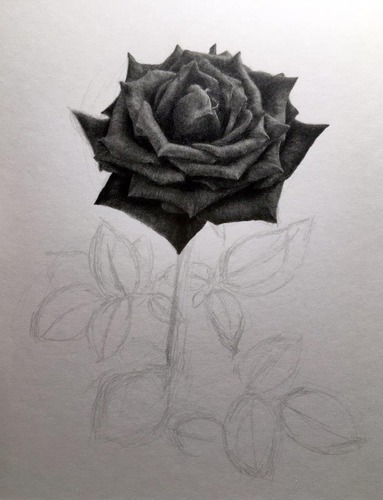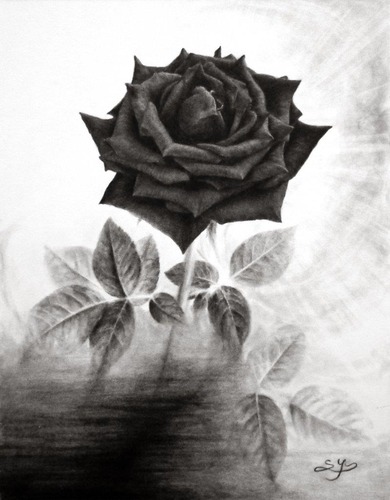- JP
- EN

Sayaka Yamada will hold her solo exhibition at Abeno Harukas, Osaka starting tomorrow, Wednesday, January 20.
We talked to him about his production and works, as this is his first solo exhibition in Osaka!
-What was the concept behind the production?
The concept of my work is “the borderline between reality”.
The boundary between reality and “what” cannot be described in clear words.
It could be an imaginary world like in a dream, or it could be a space that might actually exist, just not visible to the naked eye…. I depict the “in-between” between reality and the world.
-Why did you come to create works based on the concept of “bordering on reality”?
I used to dream every day for a long time.
Not only strange dreams, but I often had dreams that were so real that I couldn’t distinguish them from reality.
I was inspired to question such ambiguity between reality and the dream world.
I’ve also often wondered if this reality that we can only actually see is really all there is.
Later, I joined a painting class as a lesson and encountered miniature pencil drawing, and I came to want to express the ambiguous world of dream, reality, or another space that I had imagined for a long time in my paintings.
I still have dreams to this day, but I try to write down anything that might inspire me to paint when I wake up.
Rather than the scenery as I saw it in my dream, it might be more appropriate to add the atmosphere and images I felt to the picture.
I feel like I draw a combination of realistic things and their atmosphere, so I think the most important thing is to draw the realistic parts more realistically in order to express my image of this space.
I don’t know.F3
In this piece, I also painted a room that I had seen in a dream sometime ago.
The fragrance seems to evoke forgotten memories. Like the petals of a rose opening one after another…
-You said that your inspiration for your work originally came from your dreams.
I have dreams, but from there, if it’s an object, I imagine what it would be like if it had a memory… or I imagine a story in the background.
Combining dreams and actual objects in my head…
In the case of a flower, I sense the petals, the atmosphere and the expression of the flower, and expand my image from there.
”Fuyou.“F6
The motif of this one is a flower called “Drunken hibiscus.
This flower is white like pure white in the morning, but from noon to night it gradually turns red like drunkenness.
It is superimposed on the image of a woman who is longing for love.
I depicted the ambiguous nuance of whether there is a woman’s heart within the hibiscuses, or whether the woman herself is overlapping her own love with the hibiscuses.
-What is the theme of this exhibition?
I chose the theme of this exhibition as “Endless Moments”.
I think the word “moment” is a contradiction of the word “endless moment” because moment means a very short time, a split second.
The world I want to express is a space on the border of reality where even the time axis is not constant.
I would be happy if you could feel it like a scene of one of those moments when you enter a space, where the silence without sound seems to go on forever.
-What do you want people to see most in your work?
Is it the description to the details?
An unstable and uncertain chasm.
In order to bring the opposing reality into greater relief and to clarify what I want to express, no matter how much time it takes, I insist on painting down to the last detail without compromising the depiction.
-In “Garden of Illusion” M20, the decoration of the chairs and their shadows are particularly delicate.
The composition is also mysterious.
Thank you.
The garden is very well kept and beautiful and I was drawn to the decorative shadows created by the garden table and chairs.
And I felt a mysterious beauty as if I was absorbed into it.
I wanted to enjoy the space in front of me from various perspectives, as if I were playing on the border between reality and fantasy, even if everything is an illusion.
The Garden of Illusion.M20
-When did you decide you wanted to be a writer?
After graduating from high school, I worked as a regular office worker, but I decided to start a hobby.
I went to the painting class that you mentioned earlier about the concept.
As I went through the class, it became more and more fun, and I remembered that I had loved drawing pictures since I was a little girl.
It was five or six years ago that I became conscious of creating artworks in earnest.
-What is your production process?
The support is an illustration board with KMK Kent paper attached.
I have tried various kinds of paper, but the current support is the best fit for detailed depiction because the panels become coarser when they are water-stretched.
Water-stretching a panel is a process where the paper’s grain is expanded once it is moistened with water, and the grain shrinks as it dries, but the process does not return to the delicate grain that was created in the beginning.
I feel that the coarser grain makes the pencil lose its delicacy because the pencil can’t penetrate into the holey recesses.

The drawing materials I use are pencils (Hi-Uni mono100/6B-3H).
Mono100The black color is a little harder and darker than the black of the black.
The rest is kneading rubber, pencil type eraser and brush.
Depending on the work, I may add color to parts of it.
These days I often use panpastels and sometimes watercolours.
Pan pastels are slightly moist pastels.
With colored pencils, the particles are coarse so they give a rougher impression than pencils, but with Pan Pastels, they are even finer than hard pencils and it is possible to put pencils on top of Pan Pastels, so I feel they work very well together.
I like the thin layer of panpastel because it allows the color to get in between the grain of the paper, making the drawing even more delicate.
I also use it because I think that I can make the white part a little whiter than the white of the paper and that it will prevent paper burn if it has been exposed to sunlight for a long period of time, albeit only a little.
1) Draft
As you can see in the image, I very simply sketch the main subject with a soft, unsharpened pencil so as not to scratch the paper.
I keep it simple because if I spend a lot of time with a motif, my initial impression and feeling of it may change, and I may change the background, expression, and atmosphere from the composition I had in mind.
I think this is possible because the pencil is a correctable pencil.
If you keep erasing and drawing too much, it will hurt the paper, so I don’t change it drastically.

(2) Inset of the drawing
We will draw in the photo taken as a reference.
I don’t draw the picture as it is. I use dozens of photographs as reference for the portraits, and I compose the portraits in my mind, drawing out the facial expressions and images I want to portray.
I give priority to the atmosphere I want to express rather than to the likeness of the face. I’m trying to create a feeling of atmosphere rather than a facial resemblance.

(3) Draw the background
While keeping balance with the motif I will draw the background while keeping a balance with the motif.
If the background is pure white for the purpose of protecting the paper, I put the pan I put pastel white on top.

(4) Completed!
Adjust the overall balance and apply a fixative to complete! It is.
-What is the most important aspect of your technique?
I think it’s about making good use of a brush and a kneading rubber.
I feel that the most important thing is to take the time to draw carefully, rather than using techniques.
-What artists and works have influenced you?
I don’t think I have any particular artists or works that have influenced me, but I do remember liking Salvador Dali’s work when I was a little girl.
-What is your most important attitude as a writer?
What is your most important attitude as a writer?
I believe that if you stop and keep going at your own pace, you will see things.
-What does painting mean to you?
For me, painting is a natural part of my daily life.
-What are your dreams and goals for the future?
What are your dreams and goals for the future?
My goal and pure feeling is to continue my activities forever, to have more and more people interested in my paintings, and to have more and more opportunities to present them.
-Lastly, please give a few words to the people who come to see your work.
I have loved drawing pictures since I was little. I especially remember the fun I had doing pencil sketching for the first time in class when I was in junior high school, and it has brought me back to the present.
I am sometimes asked why I draw with pencil. I am not a pencil artist, but I am a painter.
There are several reasons, but the root is in that pencil drawing and the world I want to express. I like to express the world in a quiet space covered with the texture of pencil without much color.
I like the sense of discomfort in a realistic scene, or a little bit of mystery where reality and illusion intersect. I hope to express a kind of discomfort in a realistic scene, or a slightly mysterious atmosphere where reality and fantasy intersect.
This is my first exhibition in Osaka, so I am really looking forward to it. I am very much looking forward to it.
We hope you will be able to see it under these circumstances. We hope that you will be able to see it.
Thank you, Professor. Yamada!
The solo exhibition will be held from Wednesday, January 20 to Tuesday, January 26.
Please take this opportunity to view his first solo exhibition in Osaka.
Sayaka Yamada -The Endless Moment-
Wednesday, January 20 – Tuesday, January 26
venue:Sayaka Yamada -The Endless Moment-span>Art Gallery on the 1st floor
exhibiting artist:Sayaka Yamada
Sayaka Yamada creates her works with pencil drawings on the theme of “the borderline between reality”. She has loved drawing since she was a child, and this love was rekindled when she attended painting classes while working as a working adult. She is particular about the technique of pencil drawing to express her ideal of a quiet space that seems to be covered with the texture of a pencil without color. It may be a world of fantasy, like between reality and a dream, or it may actually exist, just not visible to the eye. Such unstable and ambiguous “borderline” is pursued through the expression of time-consuming details. This is his first solo exhibition at Abeno Harukas, and we are pleased to present his works under the subtitle of “Endless Moments”. The word “moment” has the meaning of an instant for a very short period of time, so the word “endless moment” is a contradiction in terms. Please enjoy a scene of a moment when you enter a space on the border of reality where even the time axis is not constant, or a space where there is no sound and the quiet continues forever.